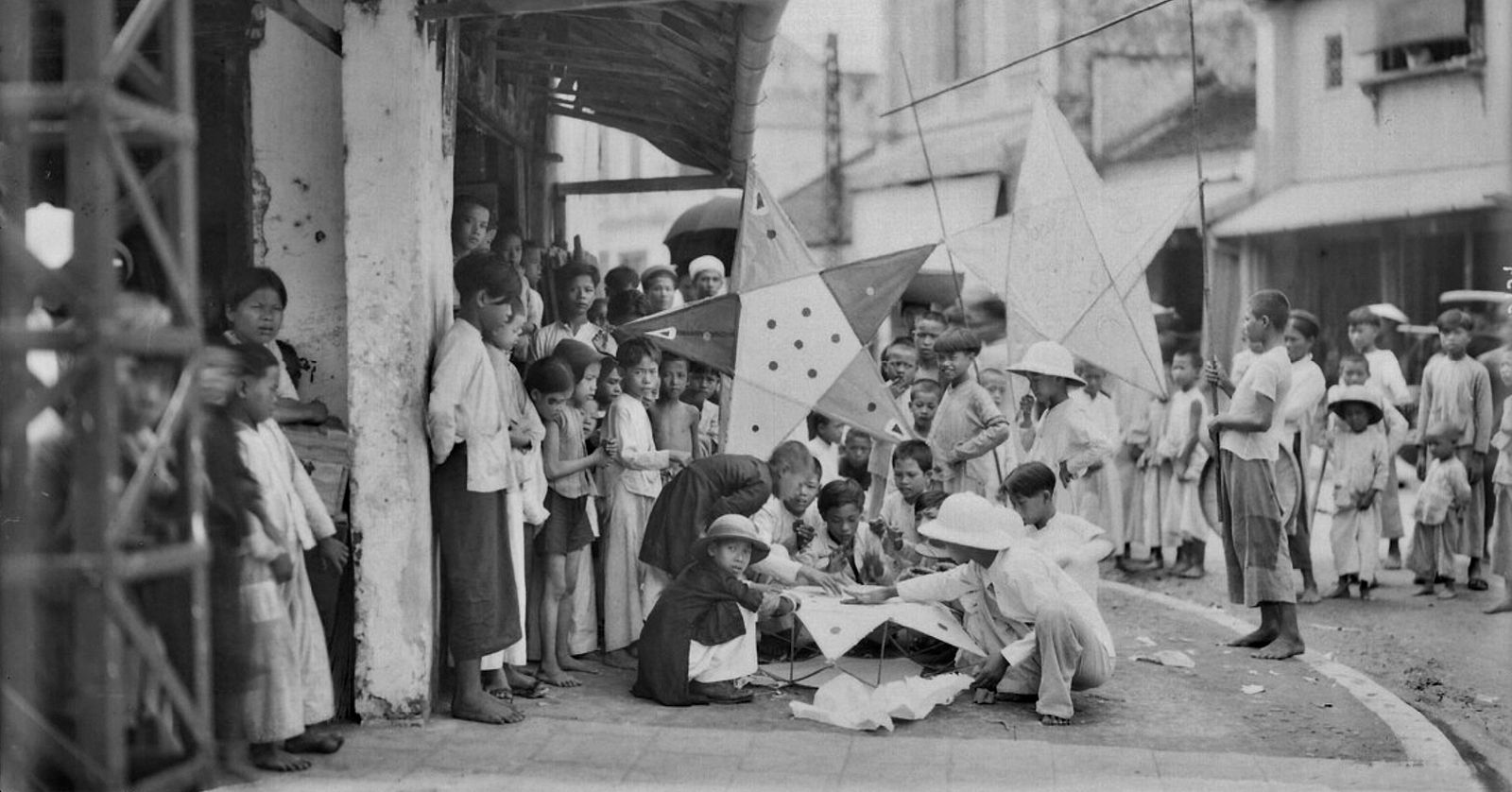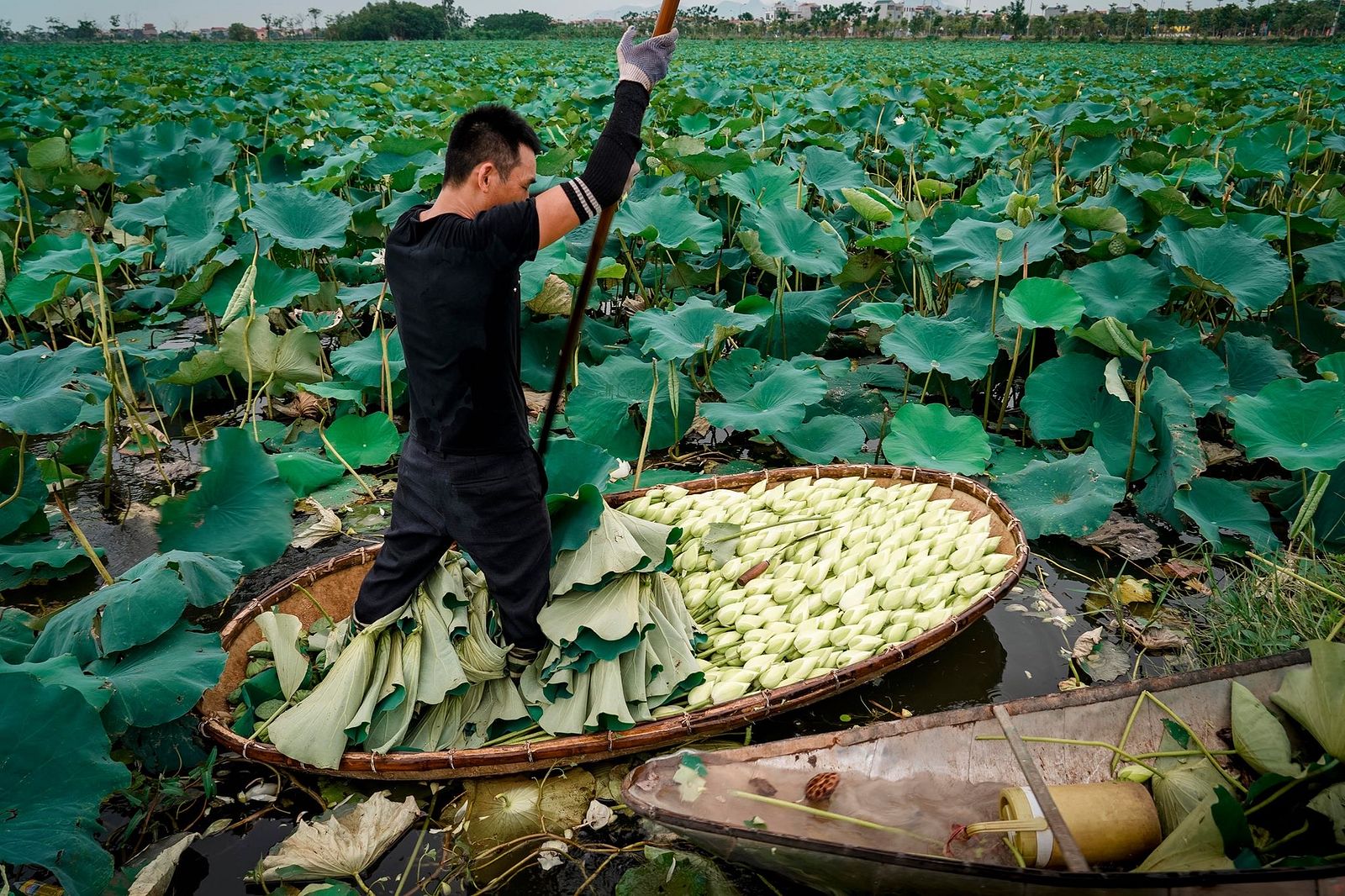In Saigon’s Chinese quarter, “lantern streets” have always been one of the most popular spots in the city come mid-autumn.
For years, lovers of lanterns and parents with young children have flocked to the area to marvel at the artisans’ impressive array of handmade paper lanterns during the Mid-Autumn Festival. The area around Luong Nhu Hoc in District 5 is especially known for its enclave of artisans making traditional lanterns from scarlet glass paper.
In Vietnam, lantern-making as a craft originated in Bac Co and Bao Dap villages in Nam Dinh Province, and then gradually spread southward to Hoi An, Hue and eventually Saigon. In Hue, craftsman gave the traditional rustic paper decorations a regal twist during the central city’s time as the country's capital by using cloth to produce the vibrant, more durable variety of lanterns commonly seen in Hoi An nowadays.
Meanwhile, Saigon’s artisan enclave in the Phu Binh residential area was founded in the mid-1950s, when Nam Dinh immigrants brought their hometown’s cultural specialty to the southern hub.
Lantern-makers in Phu Binh begin their process as early as just after Tet, as assembling the frames of the traditional paper lamps takes a long time. These frames are made from bamboo strips, which are secured together with metal wires and glue. Usually, artisans only start outfitting the frames with paper and painting the lanterns by the seventh month of the lunar calendar.
When finished, these humble paper creations are bought wholesale by vendors in Luong Nhu Hoc, Kim Bien and Binh Tay markets from VND14,000 each. At this price, artisans can earn from VND5,000 – 6,000 per lantern, while the larger ones that go for VND80,000 and above can bring in even more revenue.
While traditional handmade lanterns are loved by all as a crucial feature of Tết Trung Thu celebrations nationwide, they are also high-maintenance and fragile, deterring many vendors from including them in their displays. According to long-time lantern sellers on Luong Nhu Hoc, due to the seasonal nature of mid-autumn lanterns, vendors have come to prefer Chinese-made ones created from harder paper or plastic. The rationale behind this is that these are easier to store for next year should sales turn out to be lackluster. Authentic paper lanterns don’t receive as much love from vendors as they cost more to store and transport and are too fragile to last until the next season.
Still, things have been looking up for lantern artisans in recent years, partially thanks to intensifying public concern over Chinese-made products. As a result, parents are increasingly wary of mass-produced toys and are turning back to traditional lanterns as choice companions for their children. According to some wholesalers from Binh Tay market, over the last two years they have neither imported any Chinese lanterns nor displayed leftover ones from previous years. This has become especially common in light of China’s reaction to The Hague's ruling on territorial claims in the East Sea.
Saigon is developing at a dizzying pace, creating numerous exciting changes, while also putting an end to a slew of traditional cultural venues and values. Therefore, it’s a rare thing that an artisan enclave like the Phu Binh lantern-making community has managed to stand the test of time since it first came to be in the 1950s.
Take a tour of Saigon's colorful lantern-making communities below:
























